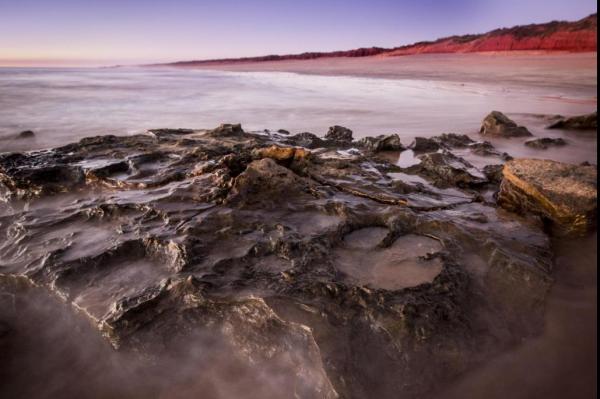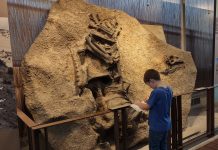
March 27 (UPI) — Scientists have discovered an unprecedented diversity of dinosaur tracks along a stretch of Australia’s Dampier Peninsula coastline. Researchers dubbed the fossil-rich acreage “Australia’s Jurassic Park.”
Along the 15-mile stretch of coast called Walmadany, paleontologists identified 150 tracks belonging to 21 different dinosaur types.
Lead researcher Steve Salisbury called the coastline the “Cretaceous equivalent of the Serengeti.” The scientists described the area’s significance in the Journal of Vertebrate Paleontology.
“It is extremely significant, forming the primary record of non-avian dinosaurs in the western half [of] the continent and providing the only glimpse of Australia’s dinosaur fauna during the first half of the Early Cretaceous Period,” Salisbury, a professor at the University of Queensland, said in a news release. “It’s such a magical place — Australia’s own Jurassic Park, in a spectacular wilderness setting.”
The dinosaur tracks were found in rocks dated between 127 and 140 million years old. Most of the dinosaur fossils found in the eastern half of Australia are between 90 and 115 million years old.
“There were five different types of predatory dinosaur tracks, at least six types of tracks from long-necked herbivorous sauropods, four types of tracks from two-legged herbivorous ornithopods, and six types of tracks from armoured dinosaurs,” Salisbury explained. “Among the tracks is the only confirmed evidence for stegosaurs in Australia. There are also some of the largest dinosaur tracks ever recorded.”
Salisbury and his team were invited by the Goolarabooloo people, an aboriginal group with claims to the land. For the Goolarabooloo, the coastline has spiritual significance.
In 2008, the government of Western Australian earmarked the Walmadany land as the site of a liquid natural gas processing plant. On account of the rich paleontological resources and spiritual significance to local aborigines, the land was granted National Heritage status in 2011. The gas plant plans fell apart in 2013.





